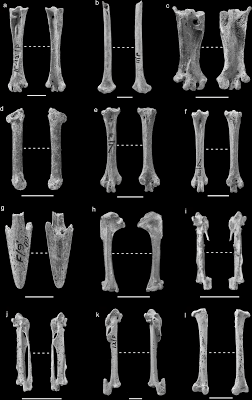
A new study focusing on the birds of the Ice Age has shed light on the long term response of birds to climate change.
The study, published in PLOS ONE, has revealed that many of the birds were larger at this time reflecting the richness and greater productivity of the environment in the Ice Age.
Conducted by Bournemouth University’s John Stewart alongside research from Roger Jacobi, a picture emerges of an unusual mix of birds in one space and a distinct Neanderthal Dawn Chorus.
John Stewart said, “During the Ice Age just over 40 thousand years ago in the north of England Neanderthals were living in an environment which included extinct animals like woolly mammoths, woolly rhinos and cave hyenas as well as the more familiar horses and reindeer. These mammals are well known to science and many studies have illuminated the spectacular fauna that lived at this early stage. Not so well known are the birds.”
Another finding was that the mixtures of birds that lived together were different from anywhere in the world today. Birds exotic to Britain, such as species normally expected in the tundra to the north (like skuas, and hawk owls), the Mediterranean to the South (like alpine swifts) or the Eastern steppes (like demoiselle cranes and long-legged buzzards) lived together with birds expected in the region today (such as grey herons and wood pigeons).
John Stewart continued, “It is clear the birds of the time of Neanderthals have changed in a way that is almost as dramatic as the change we have seen in mammals. It also signifies that the dawn chorus witnessed by the Neanderthals at that time and place has no parallels anywhere today.”
Reference:
John R. Stewart, Roger M. Jacobi. The Long Term Response of Birds to Climate Change: New Results from a Cold Stage Avifauna in Northern England. PLOS ONE, 2015; 10 (5): e0122617 DOI: 10.1371/journal.pone.0122617
Note: The above story is based on materials provided by Bournemouth University.










